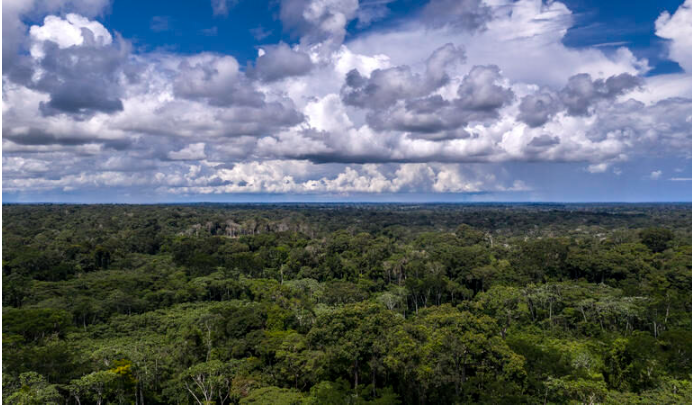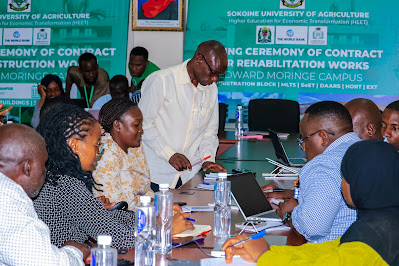by Sarah Brown
Slashing deforestation to zero and decarbonizing the economy not only could keep the forest standing but could also transform the region into a billion-dollar bioeconomy by 2050, a recent study has found.
The study, conducted by the World Resources Institute (WRI) and the New Climate Economy and published in June, found that preserving the forest, transitioning to low-carbon agriculture practices and bolstering the bioeconomy would pump an additional 40 billion reais ($8.3 billion) GDP per year into the Legal Amazon region, an administrative region that spans the nine Brazilian states located within the Amazon Basin. The transformation would also generate 312,000 additional jobs that would particularly benefit Black and Indigenous communities.
The “business-as-usual” scenario based on the deforestation and emission trends of the past 10 years would lead to irreparable environmental damage, economic collapse, and a failure to meet emission reduction targets, leaving the fate of the country hanging in the balance: “There is no future for Brazil without the Amazon,” the study authors warned.
“A new approach to the Amazon could save it from destruction while driving robust, equitable growth for Brazil’s economy,” tweeted Ani Dasgupta, the president of WRI.
This new approach would also bring environmental benefits. Brazil would have 81 million hectares (200 million acres) more standing forest from a combination of restoration efforts and deforestation cutbacks, and the Amazon would emit 94% fewer greenhouse gas emissions, putting Brazil well on track to meet international climate change goals.
“It shows that ending deforestation and maintaining the standing forest will not curb development in the Brazilian Amazon. Quite the opposite: It is an opportunity,” according to a WRI statement.

Current scenario
“Business as usual cannot continue,” warned experts from WRI. Almost a quarter of the Legal Amazon region in Brazil has already been cleared for economic activities, heavily contributing to greenhouse gas emissions. In 2021, emissions from land use and agriculture in the Amazon made up more than two-thirds of the country’s total emissions in those sectors.
In the past 30 years, Brazil emitted 67 gigatons of carbon dioxide (GtCO2), 36 gigatons of which were from the Legal Amazon region. To meet the targets in the Paris Agreement, Brazil’s emissions cannot surpass 7.7 GtCO2 from 2020 to 2050, according to the study, which concluded that if current deforestation and emission trends of the last decade continue, the Legal Amazon will lose another 59 million hectares (145.8 million acres) — an area almost twice the size of Italy — by 2050 and will produce five times above the country’s greenhouse gas limit.
It would push the Amazon to its tipping point, where the rainforest switches from being a carbon sink to a source of carbon emissions. Precipitation would dry up, having a devastating effect on the country’s rainfall-dependent agriculture: “97% of all agricultural land and 100% of pastures depend on rain because we don’t have an alternative irrigation,” Rafael Feltran-Barbieri, a senior economist at WRI Brazil and one of the study authors, told Mongabay by phone.
Despite so much deforestation, many forest-dependent communities don’t reap any economic benefits from resource exploitation. More than 83% of the deforestation in the Amazon is linked to external demands from the rest of Brazil and abroad, mostly for beef, soy and mining.

Leveraging existing knowledge
Scaling up the existing bioeconomy, a sustainable economic model that uses renewable biological resources to produce food, industrial goods and energy, could change the Amazon’s socio-economic profile by leveraging existing knowledge within the region. One of the key ways to do this is to allow Indigenous communities to lead the production and commercialization of regional products.
“Nobody could be more qualified than the traditional and Indigenous people,” Feltran-Barbieri said. “Indigenous knowledge includes hundreds of products and substances that could be exploited in the new bioeconomy.”
Amazonian Indigenous peoples use around 270 plant-based items in daily cooking and eat about 30 insect species — “the food of the future,” according to WRI.
The study analyzed just 13 of these primary products, such as açaí, cacao and honey, and concluded that even this small share of potential goods could grow the bioeconomy’s GDP by at least 38.5 billion reais ($8 billion) per year.
“The bioeconomy remains undersized when comparing its current impact and future potential,” the study found. “[It] should be much bigger.”

A pioneer in the bioeconomy
The bioeconomy across the Amazon is currently unequal, said Feltran-Barbieri. “Some states are moving towards a new economy, especially those that already have the restoration and bioeconomy program,” he said. “Others are moving in the opposite direction.”
Pará is trailblazing in the Amazon’s bioeconomy development, according to Feltran-Barbieri, having created a strategy to make the state carbon-neutral for land use and forests within 15 years by investing in the bioeconomic supply chain, credit lines and education in environmental services.
“Pará will transform from being the state with the highest carbon emissions in Brazil — due, largely, to land use changes and deforestation — to being at the vanguard of a new bioeconomy, where forests and biodiversity are a source of income, social inclusion and climate change mitigation,” according to a state government statement.
Pará is already seeing results from its strategy, including a 49% drop in greenhouse gas emissions in the first half of this year compared with the same period the year before.
The states of Amazonas and Rondônia are moving in the other direction, Feltran-Barbieri said, both of which have soaring levels of deforestation, striking social inequality and no clear plan for developing a bioeconomy. “Rondônia state is the worst; it is getting poorer every year with no sanitation,” he added.

An optimistic outlook
It will cost Brazil more than 2.6 trillion reais ($541 billion) from now to 2050 to implement a new economic model in the Amazon, on top of the 3.4 trillion reais ($707 billion) to continue as normal. This additional investment would be “less than half of the costs of not promoting the transition,” warned the study authors.
Despite the challenges, moving toward a new development model in the Amazon is highly achievable, experts say. “I think the world is ready to rally to the cause of a new bioeconomy for the Amazon. I believe that investment and social funding will flow to Brazil,” Jeffrey Sachs, U.S. economist, told Brazilian news outlet Valor International — Globo.
Some experts say this could be as soon as half a decade from now. “It’ll take 5-10 years for this new economy to reach a sustainable stage,” Carlos Nobre, a climate change expert and forest researcher, told Mongabay by phone. “I’m very optimistic that these investments will really motivate millions of people in the Amazon to move towards this new economy of a standing forest.”




